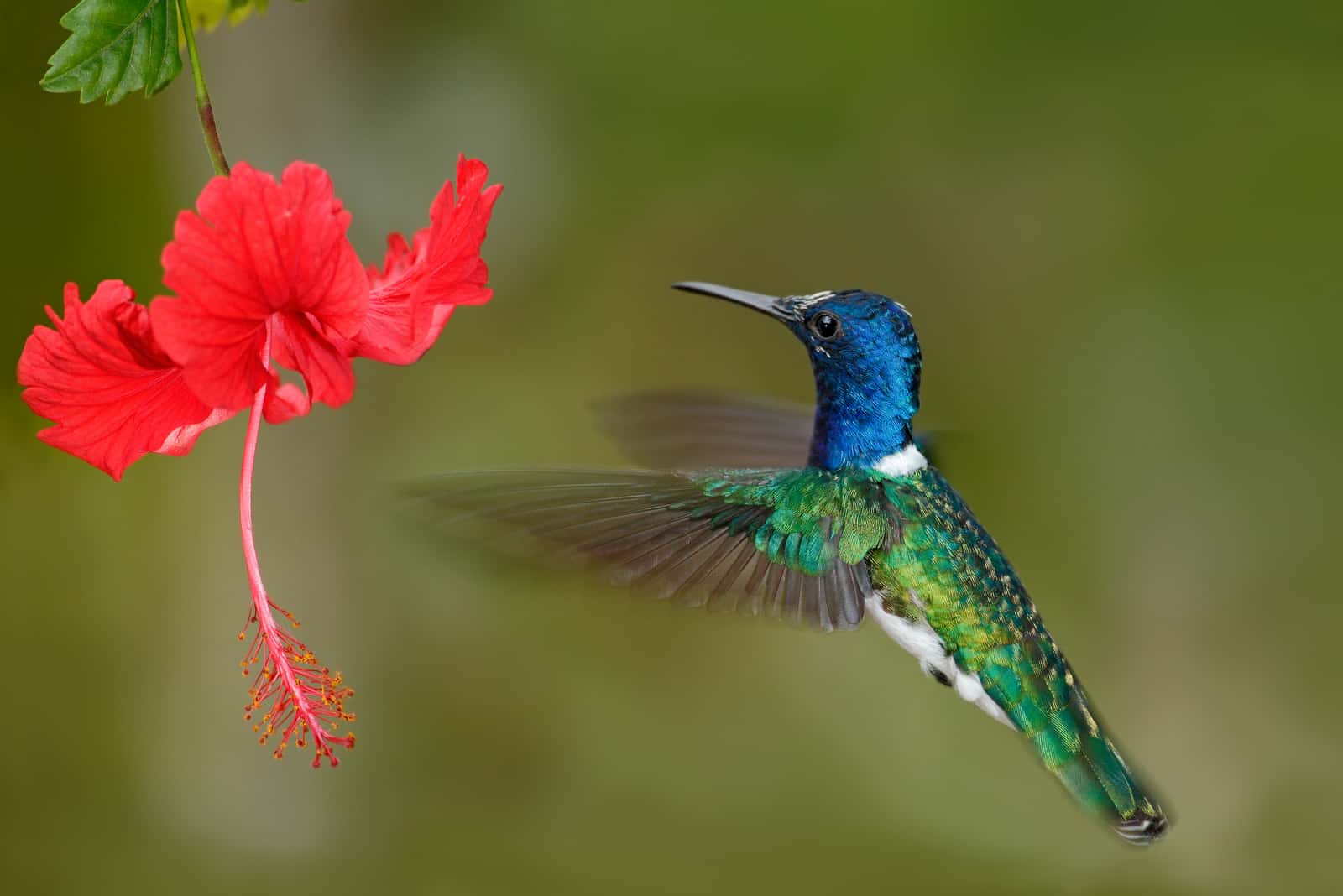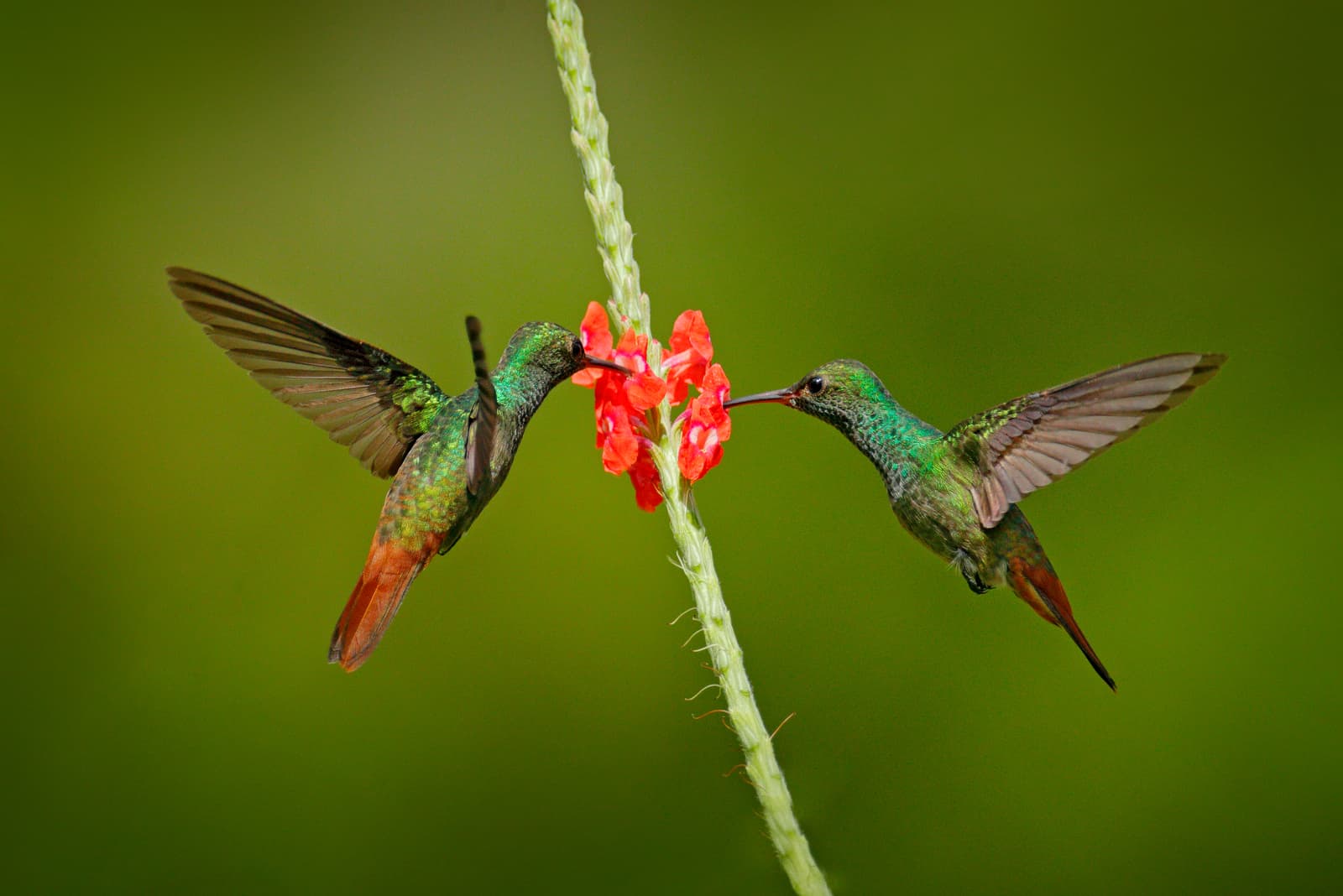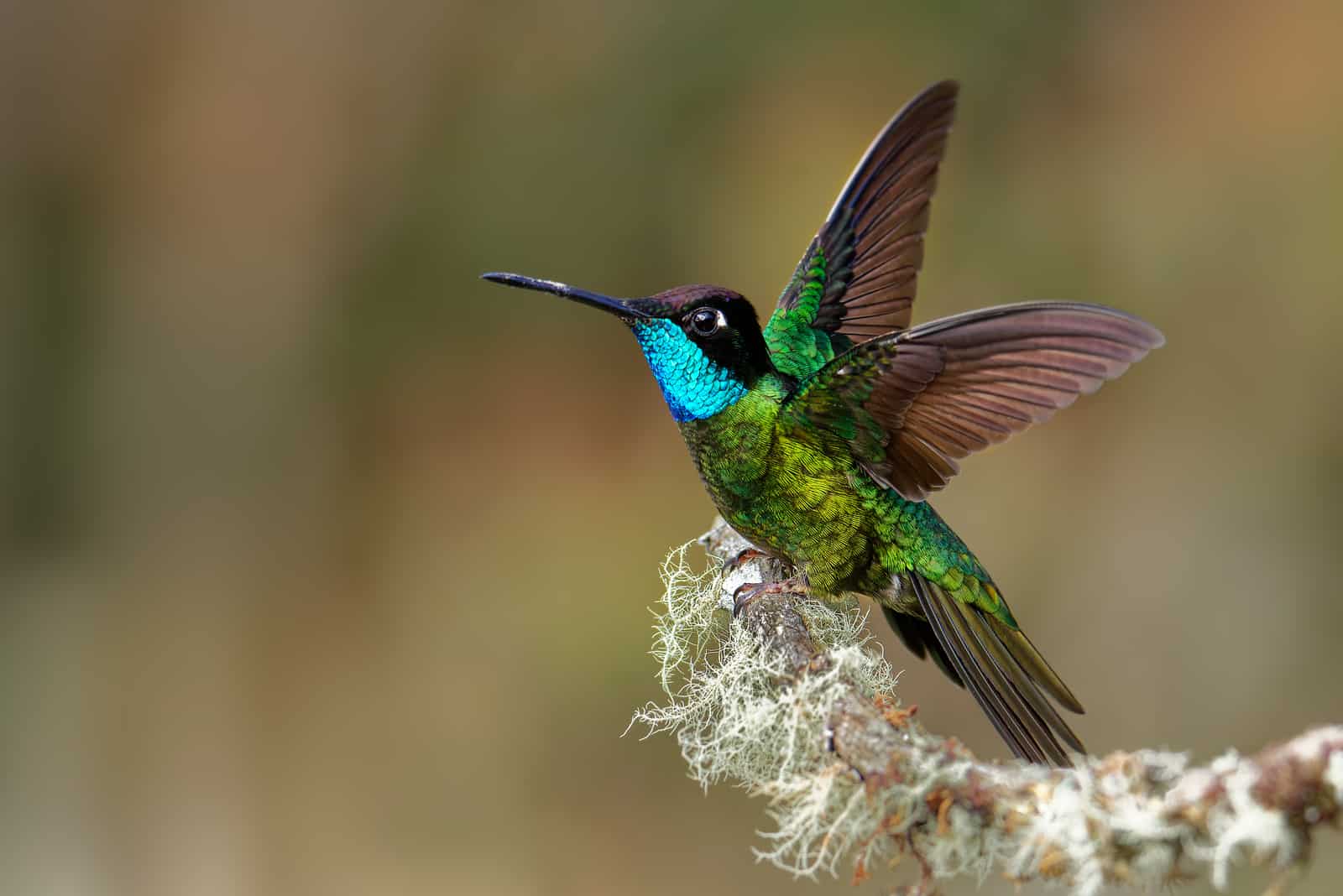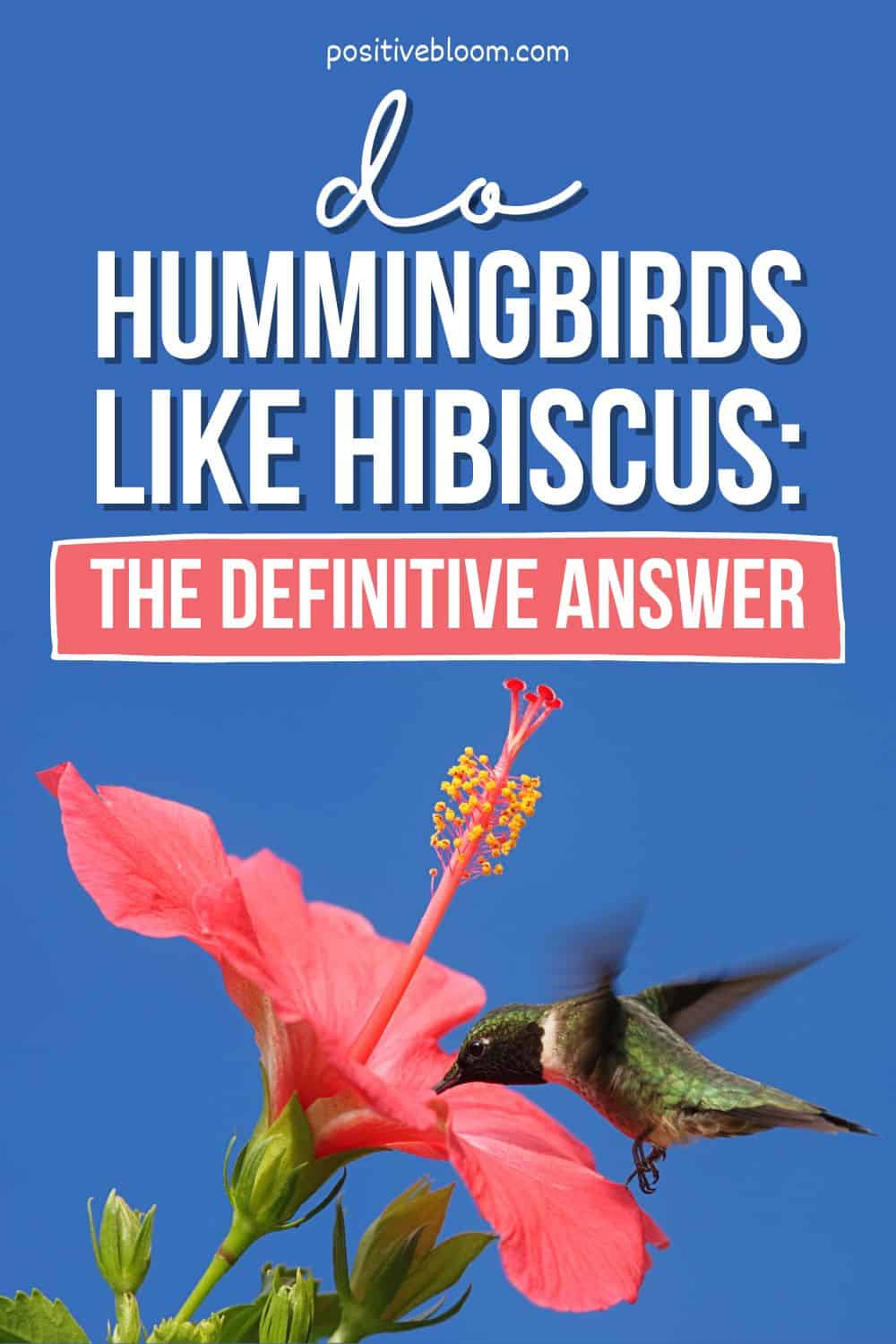Hibiscus is a tropical plant with mesmerizing blooms that come in all colors, from red to pink, white, lavender, and anything in between.
However, hibiscus is more than just a pretty face, and there’s a question that’s been bugging us for quite some time: “Do hummingbirds like hibiscus?”
You might be wondering what hummingbirds have to do with anything, but they’re quite important for your garden, which we’ll get to later on in the article.
But for now, let’s look into some general specifics about hibiscus:
[table id=177 /]Now that you have some basic knowledge about hibiscus, it’s time to find the answer to some questions, like whether hummingbirds like hibiscus, how to grow it, and the conditions it needs in order to thrive.
We’ll also explain some of the benefits of having hummingbirds roaming around your garden and reveal some additional tricks to attract hummingbirds.
Let’s get started!
Do Hummingbirds Like Hibiscus?
Yes, hummingbirds adore hibiscus, which is why gardeners all over the world grow this perennial plant. The tropical hibiscus can even be grown as an annual in colder regions.
These tiny birds simply adore a hibiscus variety known as the “Rose of Sharon”.
But why are hummingbirds attracted to hibiscus in the first place?
Let’s find out!
Why Are Hummingbirds Attracted To Hibiscus Plants?
Hummingbirds are attracted to extravagance, and large hibiscus blooms with bright colors give them exactly that. The hibiscus flowers are also incredibly fragrant and give hummingbirds plenty of nectar to enjoy.
It is precisely this nectar that attracts hummingbirds, who constantly flit about and eat as much as they can. The giant hibiscus flowers are filled with nectar and these small birds can sense it from afar.
Another thing that makes hummingbirds attracted to hibiscus flowers is their tubular shape, which allows them to bury their beaks deep into the flower and drink the sweetest nectar.
Put these features altogether, and you get a natural feeder for your hummingbirds that is big, bright, fragrant, contains nectar, and is perfectly shaped for their long beaks and tongues.
How To Grow Hibiscus
There are two varieties of hibiscus, and the climate in your area will determine whether you grow hardy hibiscus or tropical hibiscus. Hardy hibiscus can be grown in USDA hardiness zone 5-10, whereas tropical hibiscus is typically grown in zones 9-11.
Many different cultivars can decorate your flower beds and attract hummingbirds, it all depends on which color you opt for.
Care Guide Overview
Generally speaking, hibiscus is a flowering plant that is easy to care for. You’ll need to pick an ideal spot for the hibiscus that isn’t shaded by trees because this shrub needs full sun to thrive. It can tolerate partial shade conditions, but there would be less flowers that aren’t nearly as impressive, so they won’t attract many hummingbirds.
Hibiscus plant care is different during the first few weeks after planting, so you should water it every couple of days. After it gets a bit stronger, you can reduce the watering to twice a week during the first season, and when the second season comes you can water it once a week, unless there’s rain.
If you’re growing hibiscus indoors, you should know that it prefers moderate to high humidity levels, so it would be beneficial to mist it every once in a while.
Hibiscus prefers nutrient-rich and well-draining soils, so mixing some loam-based compost into the garden soil is an excellent option. You can also add peat moss or raise the garden bed so the water can drain.
It’s essential to know that high levels of phosphorus can accumulate in the hibiscus plant, bind with other nutrients, and kill it, so you should always look for fertilizers with lower phosphorus levels, such as 12-4-8 or 7-1-2.
Hibiscus can get a little out of hand, so you should prune it in late winter or early spring. But whatever you do, don’t prune the tropical hibiscus in winter as it can freeze to death.
Hibiscus Blooming Season
If you’ve done everything by the book, you may start seeing the first blooms as early as late spring, even though the real season begins in the summertime.
It really depends on the variety and cultivar, but most hibiscuses bloom in mid-to-late summer, so you can expect your garden to be swarming with hummingbirds in search of sweet nectar by then!
However, some cultivars can last until the arrival of the first frost, and if you grow this hummingbird flower in tropical regions you can expect the tube-shaped flowers to be around all year long.
What Are The Benefits Of Hummingbirds?
So far, we’ve talked about using hibiscus as a great way to attract hummingbirds to your garden, but why are they important in the first place? Don’t birds just feed on your hazelnuts, cranberries, and raspberries?
Well, hummingbirds are different. They feed on nectar and are heavy feeders. They eat every 10-15 minutes, which means they can visit 1000-2000 flowers each day!
This is why they are essential pollinators, along with bees and bumblebees.
However, there is more to hummers than you might think. They also feed on small insects like gnats, aphids, ants, beetles, wasps, and mosquitoes, which is incredibly helpful for you and your garden.
These small birds aren’t just good pollinators, but good exterminators as well, and they will help you with pest infestations so you don’t have to use pesticides on your garden plants. They also eat mosquitoes, so they save your skin as well!
How To Attract Hummingbirds
Now that you know why hummers are so important, you probably want to know how to attract more of these helpful birds. The best idea is to create a hummingbird garden.
You already know that growing hibiscus is a good way to go, but there are many other ways of attracting these birds. The section below contains some additional methods and techniques for inviting hummingbirds to your garden, such as hanging hummingbird feeders, installing fountains, and growing more flowers that attract them.
Hang Feeders
Hummingbirds are quite territorial, especially when it comes to their flowers and nectar, so they will fight anyone who approaches their food source. Therefore, you should hang several hummingbird feeders a considerable distance apart so that they can all feast.
Another key thing about feeders is making them accessible, so place them somewhere the hummers will definitely spot them. Take them out a few weeks before the expected arrival of the hummingbirds in spring, and take them away after the last one has migrated in the fall.
You can also decorate feeders with red ribbons or streamers as they have a higher color sensitivity in the red to yellow spectrum.
Don’t forget to clean the feeders! The homemade nectar can grow moldy or become cloudy, which is quite dangerous for these birds. You should replace the mixture every 3-4 days, and even more frequently in higher temperatures.
Finally, put the hummingbird feeders in the same place as the previous year. Birds have a highly developed spatial memory, so hummingbirds are more likely to return to the same place to eat. Therefore, if your garden has food for them they will come back for more.
We don’t want to leave you hanging, so here’s a video that has some great insider tips and tricks for making hummingbird feeders:
Use Sugar Water
Hummingbirds have a fast metabolism, so they need plenty of food that they sometimes can’t get from flowers alone. Using artificial nectar in your feeders is a great idea to remedy this, and even though you can buy it or order it online, you can also make your own; and it’s pretty easy.
Homemade nectar is just run-of-the-mill sugar water. Simply dissolve white sugar in water at a ratio of 4:1 in favor of water. You can also boil the mixture to make it last longer, but it isn’t necessary.
WARNING: Don’t mix red dyes into the mixture. Even though hummingbirds find them attractive, they are potentially poisonous to hummingbirds!
Install A Birdbath
Birds love baths! And none more so than hummingbirds.
Hummingbirds are somewhat vain and love to show off, so installing a solar fountain so they can bask in the sun and water will definitely encourage them to stick around in your yard a little longer.
Grow Flowers That Attract Hummingbirds
Hummingbirds love red flowers with tubular shapes, such as honeysuckle and trumpet creeper. You can always research native plants of North America or wherever your region is as native plants are much easier to grow.
There are many other flowers that hummers love, and bee balms, salvia, and butterfly bush are among them. They aren’t necessarily red, but you can get them in that color if you’re going for an all-red garden. The butterfly bush is an excellent choice as it attracts many different pollinators, which will help your garden produce many blossoms.
Columbine has a shape that makes it a little harder to get to the sweet nectar, but hummingbirds are equipped for every situation.
The Cardinal flower, or Lobelia cardinalis, is another red flower that your hummers will love. Daylilies, foxglove, fuchsia, and petunia are all flowers that these tiny pollinators love to visit too.
Finally, lantanas have vivid colors that hypnotize hummingbirds. Their flower head consists of many smaller flowers, but that’s not a problem for our hummers and their slender beaks!
Are There Flowers That Repel Hummingbirds?
Even though there are many flowers that hummingbirds adore, there are also some that they hate, and believe it or not, one of them is the sunflower. It doesn’t produce sweet nectar like hibiscus does, so your hummers aren’t particularly thrilled about it.
Another flower that we simply can’t give up is the lilac bush, and hummingbirds definitely aren’t fans of this one.
Daffodils, roses, and marigolds are also on the list of flowers that hummers don’t find attractive. However, if you grow them alongside petunias, daylilies, and cardinal flowers won’t hurt.
Q&A Corner
There is so much more to learn about hummingbirds!
This section brings you the answers to your most frequently asked questions about hummingbirds, and you can apply that knowledge next time you’re planting a flower just for hummers or installing a hummingbird feeder.
What is a hummingbird’s favorite flower?
Any tubular red flower is a hummingbird’s favorite flower. These birds are sensitive to the color red and always search for flowers with shades of red or orange.
They don’t have a favorite flower, but any brightly colored, tube-shaped flower works for them. These plants contain plenty of nectar, which is what attracts hummingbirds in the first place.
How big is a hummingbird?
Hummingbirds are pretty small, and most species are between 3-5 inches (7.5-12.5 cm) long. The smallest hummer, also known as the bee hummingbird, is around 2 inches (5 cm) long and only weighs 0.07 oz (2 g).
The largest hummingbird can be 9 inches (23 cm), weigh between 0.63-0.85 oz (18-24 g), and is known as a giant hummingbird.
Conclusion
Now that you know the answer to the question: “Do hummingbirds like hibiscus?” You can go ahead and plant one right in your garden! There are also some other flowers that hummingbirds like, and almost all of them are tubular-shaped red flowers.
However, you can also attract hummingbirds by installing feeders and filling them with sugar water, but you have to keep them clean at all times and put them in the right places so that your hummers can easily access them.
We had to mention some flowers that hummers don’t like, just in case you’ve been wondering why these tiny birds won’t visit your rose garden.
We wish you the best of luck in building your feeders and planting your creepers to attract these fantastic birds.
Until next time!
Like this post? Share or pin it for later!





